Any offense that adheres to spread offense principles can use a simple bubble screen to force defenses to cover those receivers.
When defenses have to cover all of your receivers, you can then get the numbers you need in the box to run an effective Zone Read or Split Zone run.
That’s why I always install the bubble screen first.
I want my team to understand numbers and how they can exploit every opportunity the defense gives them.
For example, in a 2×2 spread formation, there are should be 4 defenders covering each receiver closely and more than likely a safety deep over the top.
That leaves 6 to defend the line, RB, and QB.
You can block 5 and option one, block 6 and run the QB, or block 6, motion in a back and hand off the ball!
You now have a spread running game that gives the defense problems.
But you have to threaten the defense by throwing the ball to those receivers.
A lot of so-called spread teams just play lip service to getting the ball outside the hashes and when smarter coordinators see this they won’t adjust.
If you don’t have a threat…teams will start to cheat in those defenders so they can stop your run.
Then and only then, when a receiver is left uncovered, you throw the Bubble Screen and make them pay.
Bubble Screen Formations and Alignment
Two of my favorite spread formations include the 2 x 2 or “Doubles” and the 3 x 1 or “Trips” formations.
We use doubles when the ball is set in the middle of the field and trips to the wide or field-side when the ball favors the hash.
This keeps receivers evenly spaced across the field. That even spacing is critical to our receivers having room to run after the catch.
The spacing on a High School field is for the #3 to be on the upright closest to the Hash, the #2 should be on the Hash, and the #1 is on the top of the Numbers for the 3 x 1 spread formation.
The Spacing for a 2 x 2 formation is to just use the Hash and the Numbers.
When throwing to interior receivers, know that they must be positioned off the Line of Scrimmage about a yard and a half.
Depending on the formation and the game plan each week, the inside receivers know that whenever they are left uncovered to expect to get the ball and make a play.
We do not even use a hand signal – it is just automatic that our QB throws it when he sees it. I basically tell him to throw it every time he sees it unless we have tagged the play run only.
Bubble Screen Assignments
Our outside blocking receivers know that they are blocking for the bubble to be thrown at any time – and they are on high alert when the receiver inside of them is left uncovered.
Our line never has to adjust because the ball is out quickly and thrown behind the Line of Scrimmage so whatever they do for the run play always works.
If you wanted to set it up to where you call it as a coach, you can do that too. Sometimes this keeps everybody on the same page. But to truly be able to protect the run from receivers stemming at the last second, I recommend it staying automatic.
Here is an installation video from my bubble screen course that gives the rules for how to run the bubble screen in a little more detail.
Secrets to Making it Work Even If You Don’t Have 4 Great Receivers
I’ve found that running a Bubble Screen in High School works best when you make sure that the position you want to be receiving and running with the ball is consistent throughout.
It’s basically another way to get the ball in the hands of your athletes – and it makes the defense play honest.
In a 3×1 Formation, have the #3 receiver counting from the outside in be your guy. In a 2 x 2 formation have him as the #2 from the
outside in to the side you want to hold the defense (typically the backside of a zone run). It definitely helps in a 2×2 if you have two guys so the defense can’t scout you.
It also helps to pair up your best blocker with your best runner to help give him extra time. I’m am fine with flipping sides for receivers because we have plays like bubble slant and bubble go that can keep defenses accountable from trying to guess the play.
Coaching Points
One of the biggest points that you have to make to your players when running the bubble screen is that this is an outside run play. They absolutely cannot ever cut it back inside.
If they do, they risk big hits because there is no one blocking for them. We emphasize that a 5 yard gain is all we need…and even if they have to dive forward to get an extra 2-3 yards, that is better than trying to work back and getting stood up and pushed back.
Then we tell our blockers that they have to block the defenders line of attack. Every Corners responsibility is to always force the ball back inside and not let it go outside.
So we have our receivers breakdown on the outside shoulder of the Corner. Then when he continues to get wider, we stalk block his outside arm and should and are in great position to drive him back or into the sideline.
This either opens up a lot more space for the ball carrier to run or we get the edge outside up the sideline and it turns into a big gain.
I do not allow our receivers to cut the ball up inside the blocker unless he is being forced out of bounds – that is how extreme I want them outside.
Contingencies
If a team is playing a very aggressive Cover 2 – it can be difficult to run bubble screens to the outside.
In this case, we have two variations that we can run.
The first variation is to run a Smoke Screen to the #2 Receiver.
Here he turns back to the QB and doesn’t bubble outside. When he catches it he immediately plants and works upfield getting what he can and our receiver blocks out on the Corner.
The other option I like a little bit better is to switch the receiver and run a Quick Screen from the outside in. This is more of the Air Raid Style of a Bubble Screen.
The Y now blocks out on the Corner and the Z jabs and released inside with intent to get back outside as quickly as he is able to.
Conclusion
The bubble screen can provide your team success very quickly and is cheap in terms of time it take to master it and have good success.
It also helps your entire offense run successfully when you have forced defenses to cover you horizontally the entire width of the field.
My entire quick game package was essentially replaced the first time I put it in and to an extent, you may never need a quick game again when you add in the counters to the bubble screen like Bubble Slant and Bubble Go.
Because I loved it so much I made a course on just Bubble Screen and everything we were doing with it.
That course has been published for many year, but all the concepts and ideas are still timeless.
If you want to check it out and learn more, I’ll happily share an 80% discount coupon for anyone who might be interested.

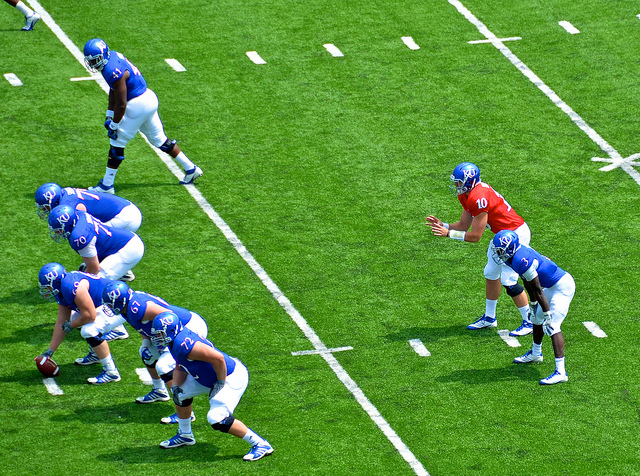
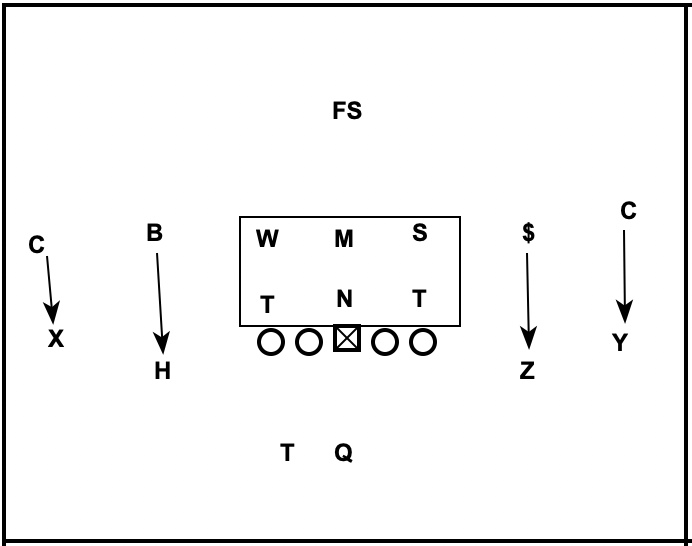
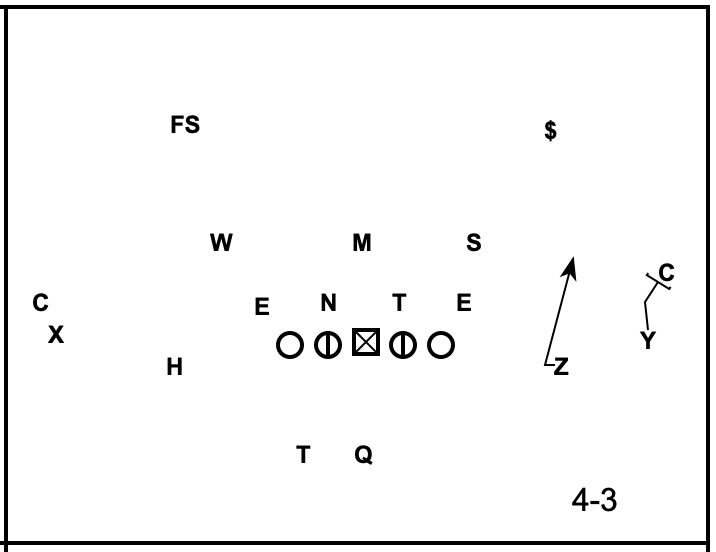
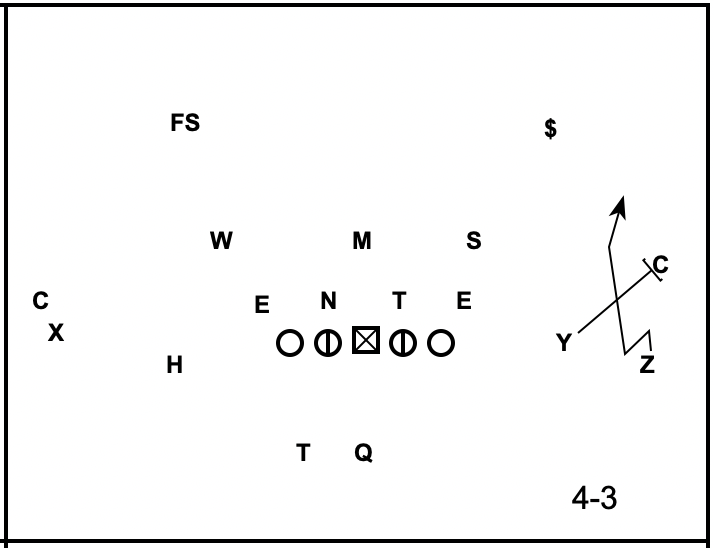
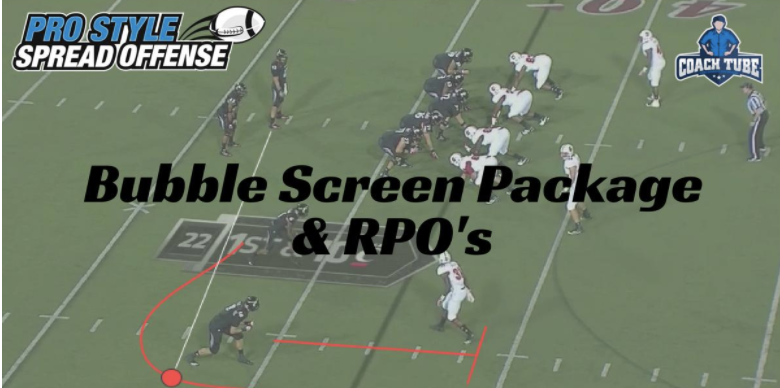
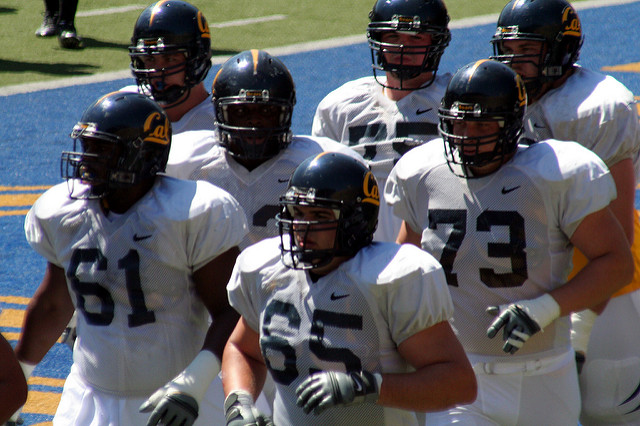
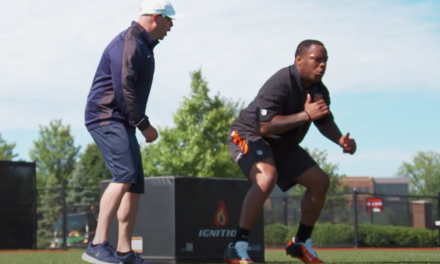
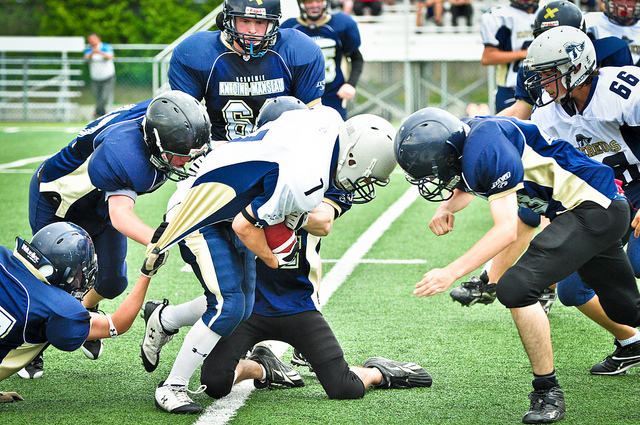

Coach how deep should a college qbs heels be on the snap and what are the steps of the bubble route
So I would go with heels at 5 from the ball. I’m a fan of the bubble route focus being on getting lateral width…If he needs to back off the LOS a bit to get a better angle to turn and catch that’s ok. It’s really a lateral run so inside foot up stance, then step lateral and crossover run with the second step. Big emphasis on getting their shoulders back for the ball.